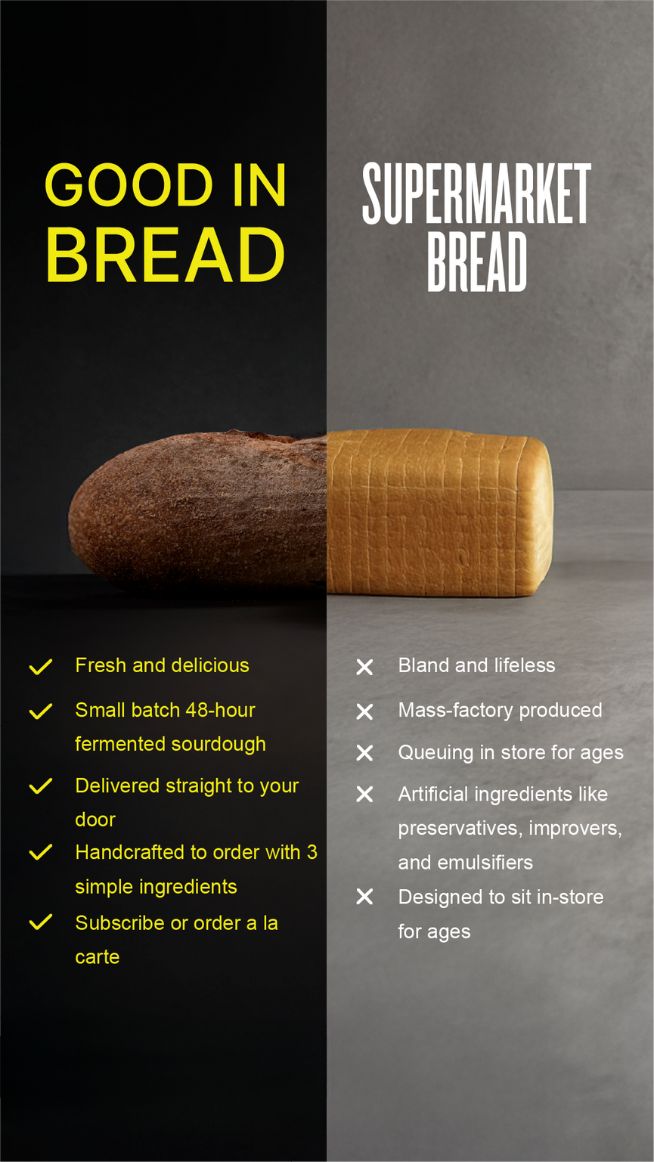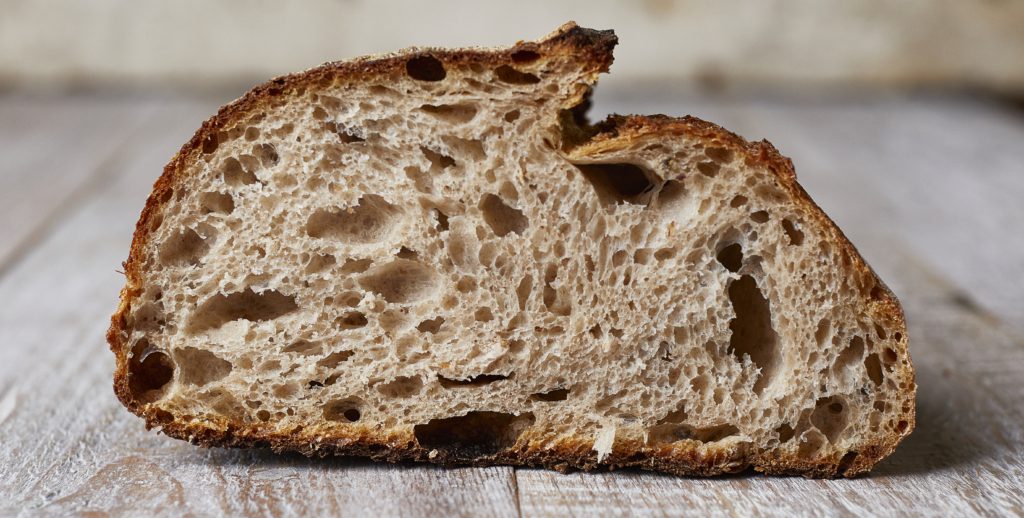Shelf-Stable, Gut-Unstable: The story behind white bread

Why white bread still rules the aisle — and what we can do about it
White bread is a British staple. Soft, sweet, claggy white bread — the kind that sticks to the roof of your mouth, makes perfect toast for marmalade, and somehow lasts for weeks in the bread bin. Like many British icons such as Marmite, the Royal Mail, and the long-lost Top of the Pops, white sliced bread is something we love, mock, and secretly still rely on.
But behind every supermarket loaf is a surprising story. Behind it lies a story of science, efficiency, and a revolutionary method: the Chorleywood Bread Process.
The bread revolution that nobody noticed
In 1961, British scientists developed a new way to make bread that was faster, cheaper, and easier than ever before. Called the Chorleywood method, it used intense mixing, extra yeast, and a whole cast of additives to speed up fermentation and standardise results.
Suddenly, a loaf could be made in just a few hours instead of a full day. It was fluffy, white, and endlessly repeatable. It made white bread more accessible, but also less alive.
Fun fact: over 80 percent of supermarket bread in the UK is still made using this method today.
Welcome to UPB: Ultra-Processed Bread
Modern white bread is no longer just flour, water, salt, and yeast. It’s emulsifiers, preservatives, enzymes, sugar, added gluten, and nutrients put back in after being stripped out.
In fact, many of these loaves now fall into the category of ultra-processed foods (UPFs) — a classification linked with a range of health concerns, from gut issues to increased inflammation. White sliced bread alone makes up about 11% of the average UK diet.
And yet, it still dominates the shelves.
“The Chorleywood method gave us consistency,” one baker quipped, “but it also gave us a loaf you can fold like paper.”
White Bread Culture: More than just crumbs
White bread is more than a food — it’s a cultural artifact.
It’s the school lunchbox. The emergency toast. The bacon sandwich on a Saturday morning. It’s plain, reliable, uncontroversial. But maybe also… a bit boring?
Contrast that with the sourdough renaissance: crusty, chewy, fermented, imperfect — sourdough is everything industrial white bread is not. It’s slower, wilder, and unapologetically alive.
We like to think of it this way:
| Supermarket White | White Country Sourdough | |
| Texture | Uniformly squishy | Open crumb, crusty, springy |
| Shelf Life | 1–2 weeks (with preservatives) | 3–5 days (if you can resist that long) |
| Fermentation | Rapid, chemical | Slow, natural, gut-friendly |
| Ingredients | Often 10+ (some unpronounceable) | Flour, water, salt — that’s it |
| Vibe | Mass market | Small batch, big flavour |
White Bread 2.0: Is redemption possible?
Interestingly, scientists are now trying to rescue white bread’s reputation.
Researchers in the UK are working on a new kind of loaf: one that looks and tastes like white bread but has the nutritional value of wholemeal. They are using ingredients such as peas, beans, wheat germ, and bran — all the parts that are typically stripped out.
One researcher called it a “delicate balancing act,” describing the challenge of making bread that is both familiar and functional. Think of it as the superhero origin story of white bread, if it ever makes it to the shelves.
White Bread but better? We’ve got it.
Our White Country Sourdough is our answer to the white bread dilemma. It’s white bread, yes — but it’s made with intention.
It’s:
- Fermented for 24+ hours
- Made with organic stoneground flours to preserve the germ and the bran
- no additives
- Full of flavour, texture, and wild microbes
- Still beautifully light, open, and sliceable
You might say it’s the glow-up of the classic white loaf. Nostalgic on the outside. Nutritional on the inside. The kind of bread that works with your gut, not against it.
If you’re still loyal to the soft crumb of a classic white loaf, our small tin loaf is the best gateway to sourdough heaven. Healthier but still soft and subtle.
Final Crumb
White bread still rules the aisle — for now. But as more people ask questions about what’s in their food (and how it makes them feel), we’re seeing a shift. It’s no longer just about softness or shelf life. It’s about flavour. Fermentation. Integrity.
So maybe the real secret of the supermarket loaf… is that it’s finally met its match.
And it’s crusty.
